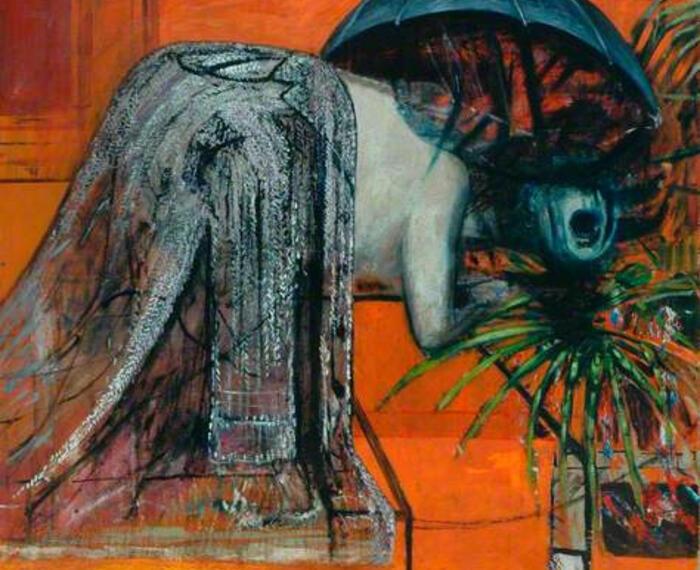The Wanderer (1911) is one of thirty drawings by Paul Nash in the British Museum. Most are preparatory drawings but seven are watercolours, of which this landscape, is the earliest. Nash turned to landscape drawing after quitting the Slade School of Fine Art in December 1911, a year after enrolling. He later reflected in his autobiography Outline (1949) that he left 'without having learnt to draw in the accepted sense'. In truth, though he felt animated by a 'great desire to draw' he struggled with some of the more traditional aspects of his artistic training: 'I find painful difficulties in drawing from the model! I know what I want to express - all that I can see beautiful of line and expression, and away goes the correctness - the true proportion!'. This important career move was spurred on by his patron, the painter Sir William Richmond (1842-1921) whom he had met that same year. In a letter to his friend Gordon Bottomley, Nash describes how, after having shown Richmond some 'out o' door landscapes' dating from Easter, Richmond exclaimed that he had 'a great feeling for nature' and that he 'should go in for nature' . Wishing to leave for Paris to pursue his training, Richmond convinced him to stay and work on his landscapes for a month so that he could 'send them with a letter of recommendation to the Carfax Gallery' . Richmond, true to his word, introduced his young protégé's work to the gallery's manager, A.B. Clifton and in November 1912, the Carfax Gallery exhibited Nash's drawings, including the present work (no. 15), in his first one-man exhibition. From then on, Nash's interest in landscape drawing grew and he spent the greater part of his career depicting his particular perception of nature.Nash found an ease in landscape drawing that he couldn't grasp in his life drawing classes at the Slade: 'I did not find it difficult to draw this tree as I had found the models at the Slade difficult to draw'. The vision of nature that Nash unveils through his early landscapes was informed by his childhood experiences in Kensington Gardens, in the 'Bird Garden' at Iver Heath (his home) and the Wittenham clumps (near his uncle's farm in Oxfordshire). It is not the vision of the topographical artist, painstakingly illustrating the view before him, but that of a man 'immersed in nature, living and expressing himself through it' . Indeed, in Outline, after a description of Kensington Gardens, the place where he would flee his cold London house and escape into an imaginary world, he wrote: 'It was always the Inner life of the subject rather than its characteristic lineaments which appealed to me' .Due to the style of The Wanderer (1911) it is very close to Night in Bird Garden (private collection) which Nash later inscribed '1911' Roger Cardinal claims that Nash drew The Wanderer while visiting relatives at Great Horkeseley, Essex, in 'Constable country'. Nash, though he found inspiration in the same place as the famous British landscape painter, 'did not want to paint landscape like Constable' and instead kept his own individual and very personal interpretation of nature.

